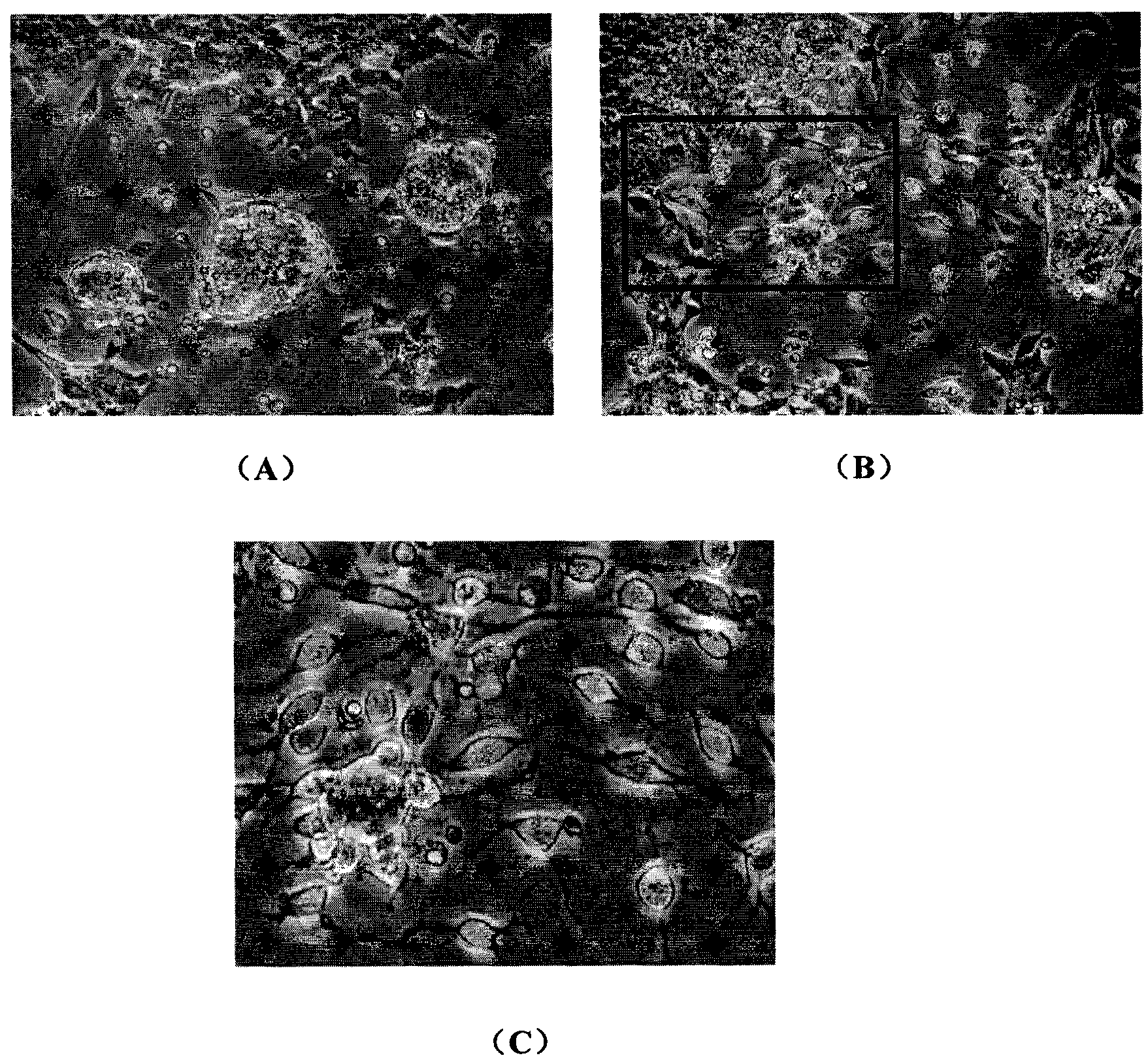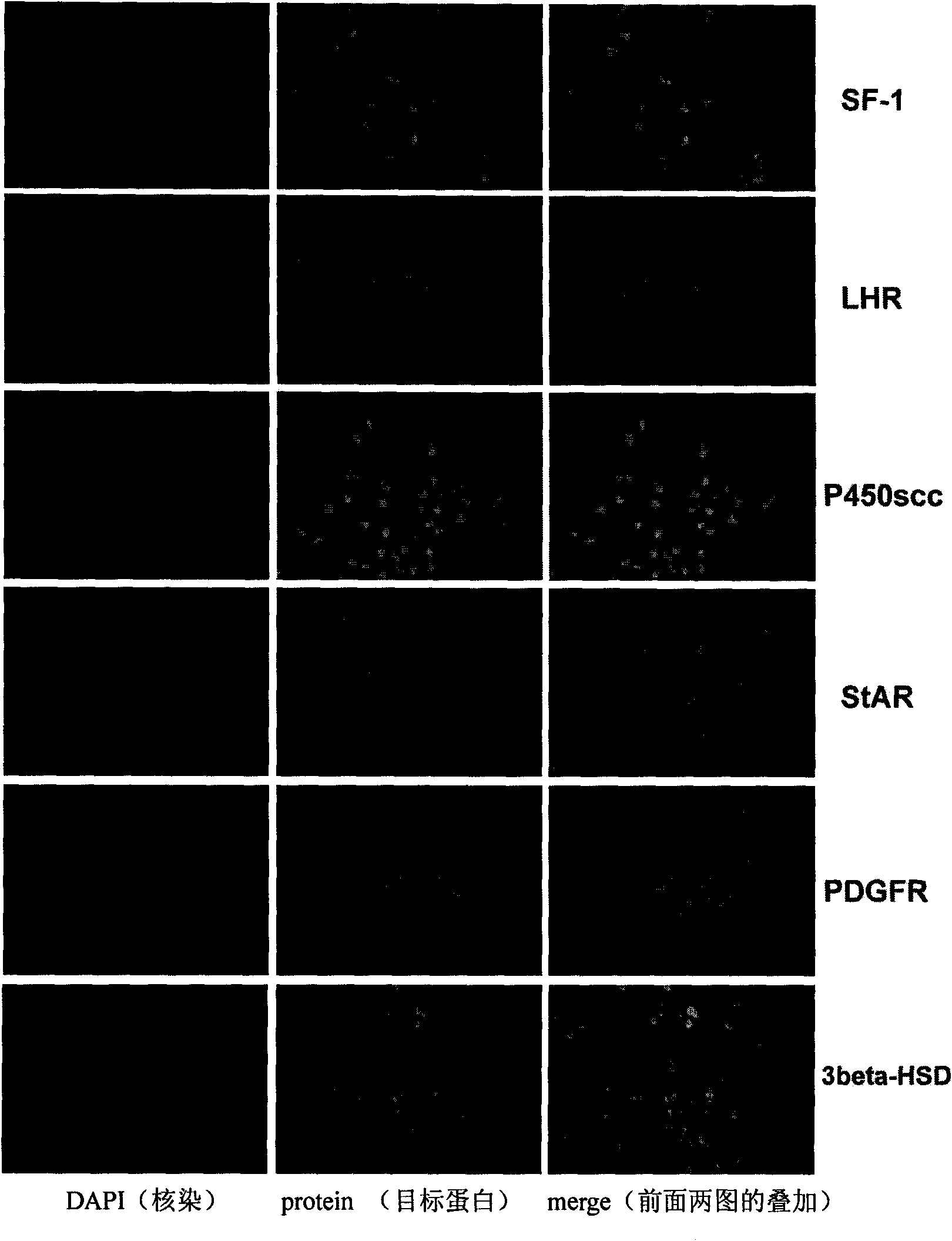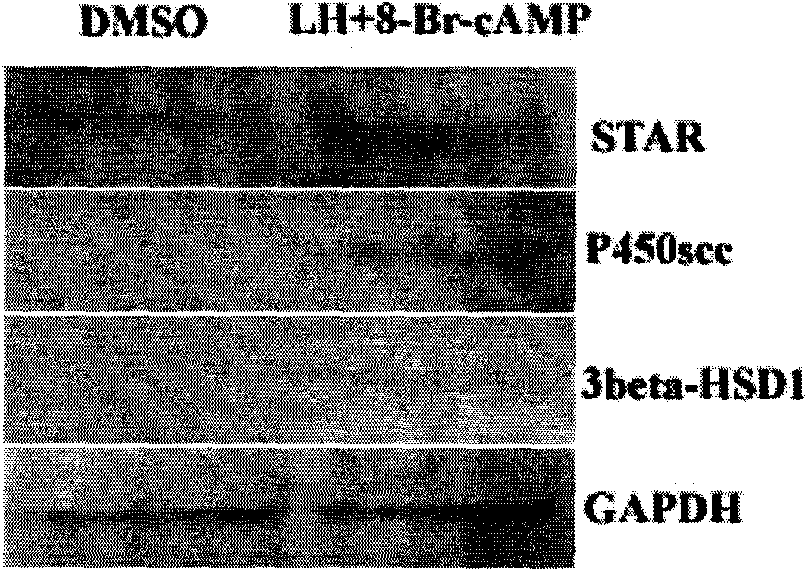Construction and application of model for differentiating stem cells into testicular interstitial cells
A technology of Leydig cells and embryonic stem cells, which is applied in the fields of developmental biology and pharmacology, can solve problems such as the screening of unseen pro-cell differentiation agents, and achieve the effect of improving application prospects
- Summary
- Abstract
- Description
- Claims
- Application Information
AI Technical Summary
Problems solved by technology
Method used
Image
Examples
Embodiment 1
[0017] Example 1: Directed differentiation of ES cells into Leydig cells in vitro
[0018] 1. ES cell transfection
[0019] ES cells were cultured without a feeder layer, and plasmid transfection was performed according to the instructions of effectene transfection regeagent (Qiagen) (effective transfection reagent manual). 4×10 per well in a 6-well culture plate 5 ES cells, and operate according to the following reagent volume. Take 2 μg of each of the two plasmids to be transfected, SF-1 and LHR, and dissolve them in 100 μl of EC buffer, then add 16 μl of enhancer enhancer solution, vortex for 1 second to mix, and place at room temperature for 2-5 minutes; then add 25 μl of effective transfection solution effectene transfection regeagent , vortex for 10s, and place at room temperature for 5-10min; then add 0.6ml of culture medium and mix well, add it to ES cells in a 6-well plate, set the final volume to 2.2ml, and place at 37°C, 5% CO 2 Cultivate in the incubator for 24 ...
Embodiment 2
[0025] Example 2: Real-time PCR detection of gene expression of luteinizing hormone LH induced directed differentiation of ES cells into Leydig cells
[0026] First, according to step 1 of Example 1, ES cells were transfected for 24 hours and the culture medium was replaced, then the inducer was added, 100ng / mLLH and 1×10 -3mol / L 8-Br-cAMP co-induced ES cells transfected with SF-1 and LHR plasmids to differentiate into Leydig cells. Collect the cells on the second day of induced differentiation, extract RNA routinely, and then prepare a reaction solution in a 0.2ml PCR tube: 3 μg of total RNA, 0.5 μl of Oligo-dT (15 μg / μl), 1 μl of dNTP mix (10 mmol / L), double Distilled water (DEPC) 10 μl, put the reaction tube in a PCR instrument, and pre-denature at 65°C for 5 minutes. After the denaturation reaction, prepare the cDNA first-strand synthesis reaction system in the PCR tube, place the PCR tube in a PCR instrument for 50 min at 42°C, denature at 70°C for 15 min (to inactivate ...
Embodiment 3
[0035] Example 3: WB detection of protein expression of luteinizing hormone LH induced directed differentiation of ES cells into Leydig cells
[0036] Collect the cells on the 2nd day of induced differentiation as in Example 2, extract protein as usual, run 12.5% SDS-PAGE electrophoresis, then take out the nitrocellulose membrane after transfer, and place it in 0.1% of 5% (w / v) skimmed milk powder. In % Tween-PBS solution, room temperature for 1h or overnight at 4°C; take out the overnight nitrocellulose membrane, wash with 0.5% Tween-PBS solution for 5min / 3 times; add primary antibody, room temperature for 1h; wash with 0.5% Tween-PBS solution Wash for 5 min / 3 times; add secondary antibody, and place at room temperature for 30 min; wash with 0.1% Tween-PBS solution for 5 min / 3 times; prepare ECL solution; add ECL solution to the membrane, avoid drying, room temperature for 1 min; Membrane wraps the membrane well; X-film exposes and analyzes the results.
[0037] The result...
PUM
 Login to View More
Login to View More Abstract
Description
Claims
Application Information
 Login to View More
Login to View More - R&D
- Intellectual Property
- Life Sciences
- Materials
- Tech Scout
- Unparalleled Data Quality
- Higher Quality Content
- 60% Fewer Hallucinations
Browse by: Latest US Patents, China's latest patents, Technical Efficacy Thesaurus, Application Domain, Technology Topic, Popular Technical Reports.
© 2025 PatSnap. All rights reserved.Legal|Privacy policy|Modern Slavery Act Transparency Statement|Sitemap|About US| Contact US: help@patsnap.com



